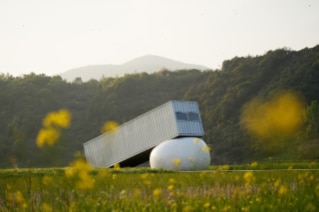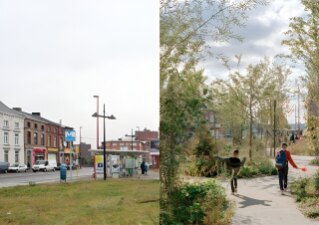Canadian architecture firm Provencher Roy has finalized the site of the Darwin Bridges, a curved bridge on Nun’s Island outside Montreal. This project was contracted directly by the municipality, and is going to replace the existing two-course bridge system of the 1960s that has fallen into disrepair.
For the new bridge, the local firm envisioned a curvilinear form that would continue its function as an automobile route, but also take into account pedestrian access behind and below. The peculiarity of the architecture, however, lies in the material used for the site namely a special type of concrete that uses recycled glass in the mix.

Recycled glass converted to ground glass pozzolan (GGP) was included in the aggregate, accounting for about ten percent of the mix. According to the study, this reduces the total C02 emissions required for bridge construction and creates a “strengthening of the mechanical properties of the concrete.” This strengthening occurs because of the way the aggregate cement reacts with the GGP, forming calcium silica hydrate. More than 40,000 kilograms of glass were used in the mixture.
The study also focused on the experience of the walkway running under the bridges. The median running along the highway was widened, giving the bridges an arched shape in plan. Between the bridge structures, the studio created a retaining wall lined with plants to create a space inspired by a secret garden.


















